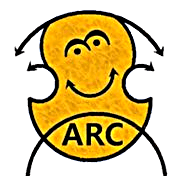Vibrato Methods
Since you already learned that Vibrato motions begin from the pitch, arcs under the pitch and then returns to the pitch, let’s explore different methods of accomplishing this procedure.

Range of Motion
Vibrato is a natural thing. Through trial and error, you will find and develop your own best approach to expressing vibrato.
Parts involved in vibrato motions:
ARM — WRIST — HAND — FINGER
Many teachers choose to isolate each component and work on the successful relaxing of all parts individually. This can prove to be helpful, but may cause one to “over think” a very natural process.
Relaxed muscles are crucial to vibrato success. Complete freedom of motion is needed in order to master vibrato variance.
All approaches are successful at different performance moments. Regardless of the method, the goal is to gain control of the speed and width of vibrato, in the most natural way possible.
Vibrato may look like you are increasing muscle intensity. However, the opposite is the case. Mastering Vibrato, requires you to gain controlled looseness of your fingertip’s string contact.
For lower pitches, perform slower and wider vibrato motion.
For higher pitches, perform quicker and narrower vibrato motion.





